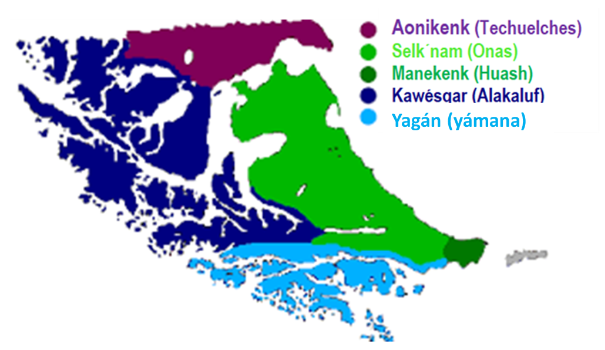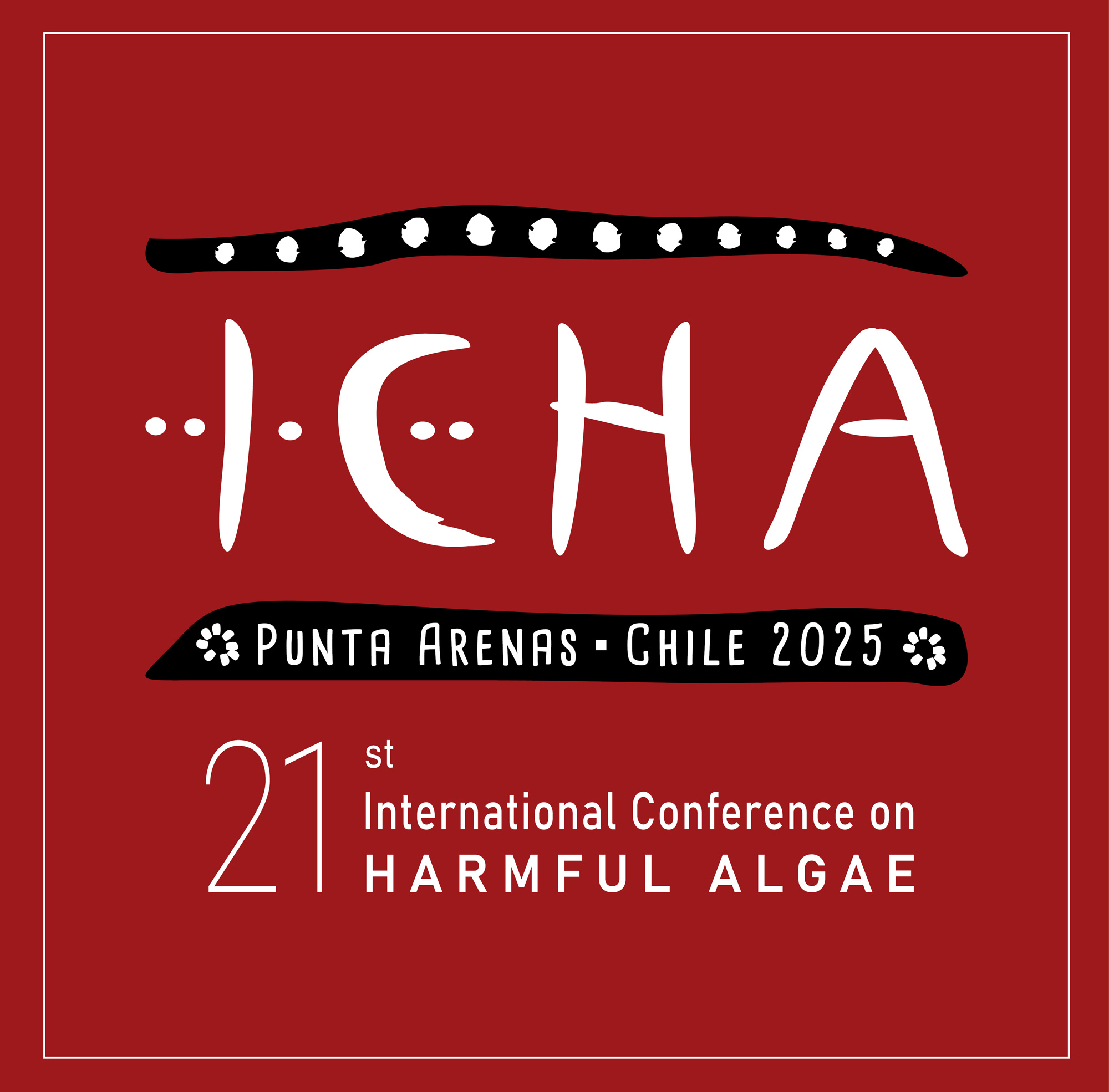Description and Rationale of the ICHA 2025 logo
Prior to the arrival of European culture, the southernmost part of South America, specifically the Fuego-Patagonia region was inhabited by five native peoples, two of them seafaring nomad canoeists and hunter-gatherers, known as Kawésqar (misnamed Alakaluf) and Yagán (also known as Yámanas) (Figure 1). This territory is presently under the sovereignty of Chile and Argentina (although this detail is not relevant in this specific case).
Evidence of human presence in the Patagonian and Fuegian fiords dates back 7.000 years. The Kawésqar inhabited the patagonian fiords in western Patagonia, from the Taitao península to the Strait of Magallanes, while the Yagán inhabited the Fuegian channels, from the Strait of Magallanes to the Beagle Channel. The language of both peoples was sufficiently different for communication between the Kawésqar and the Yagán to have been intelligible, although there is evidence of contact and communication between them.
The rupestrian art in Chile´s channels has only recently been described. In 1991, a description was made of a red-stained painting found in a site called Children’s Cave, located in the Última Esperanza Fiord.
Figure 2. Picture of a rupestrian painting belonging to the Kawésqar culture taken in Isla Madre de Dios, in the Patagonian fjords in 2018.
Figure 3. The logo of the 21st International Conference on Harmful Algae (ICHA 2025).
In 2006, a French scientific expedition found a cave in the Madre de Dios archipelago in the Última Esperanza province in Chile, located in the north end of the Magallanes region, and called it “Grotte de Pacifique” and Cave Augusta 1. The cave contained around fifty rupestrian paintings made by canoeist cultures, dating from 3000-4000 BP. They were classified as categorized as flat paintings, based on dots, in the case of the anthropomorphic figure and flat radiated in the case of the other two figures represented to the left of the anthropomorphic figure. Only one of the several dozens of existing photographs has been used (Figure 2).
The rupestrian art of canoeist peoples is characterized by representing anthromorphic and other radiated figurative forms, exceptionally zoomorphic, but does not include hand impressions or three-digit figures as in the case of terrestrial peoples in this part of the world, but include non-figurative motifs, dominated by red, although black colors have also been recorded. Differences have been found between Kawésqar and Yagán rupestrian art. The details related to rupestrian art in Fuego Patagonia are found in Muñoz (2020) y Gallardo et al., (2023).
The ICHA 2025 logo (Figure 3) is inspired in rupestrian paintings and in the colors used by both canoeing peoples and is a tribute to the first inhabitants of the fjords and channels of the American South. The colors used are dark red, black and white. The main motif of the logo is based on the anthropomorphic figure of the rupestrian painting (Figure 2), which has been presented horizontally to represent the first two letters of ICHA. The main axis of the anthropomorphic figure, characterized by a line of separated dots has been arranged horizontally, but in white on a black background in the upper part of the logo, where each dot recreates the morphology of a harmful microalgae, a typical dinoflagellate.
At both ends of the caption “PUNTA ARENAS . CHILE 2025“, which is displayed on a black background, we have recreated the radiated shape, representing the first figure from left to right of the motifs displayed in the selected photograph (Figure 2).
The logo was created by Carolina Irarrázabal and Natalia Golsman, both designers from Instituto de Fomento Pesquero (IFOP), to who we extend our gratitude for their willingness and motivation to contribute to the design of the ICHA 2025 logo. We would also like to thank anthropologist Dr. Nelson Aguilera, for his willingness to share these photographs taken in 2018 in the “Grotte de Pacifique” and Cave Augusta 1, that inspired the logo design.

REFERENCED LITERATURE
Muñoz, Camila. 2020. Nuevas aproximaciones al arte rupestre de Fuego-Patagonia, Chile: Caracterización y comparación de los sitios del continente y de los canales del extremo sur. (New approaches to the rock art of Fuego-Patagonia, Chile: Characterization and comparison of the sites in the continent and the channels of extreme south). Magallania vol, 48 n°2 Punta Arenas. versión On-line ISSN 0718-2244. https://www.scielo.cl/scielo.php?script=sci_arttext&pid=S0718-22442020000200161
Gallardo, Francisco, Gloria Cabello, Marcela Sepúlveda, Benjamín Ballester, Danae Fiore & Alfredo Prieto. 2023. Yendegaia Rockshelter, the First Rock Art Site on Tierra del Fuego Island and Social Interaction in Southern Patagonia (South America). Latin American Antiquity 34(3) : 532–549. https://doi.org/10.1017/laq.2022.47





